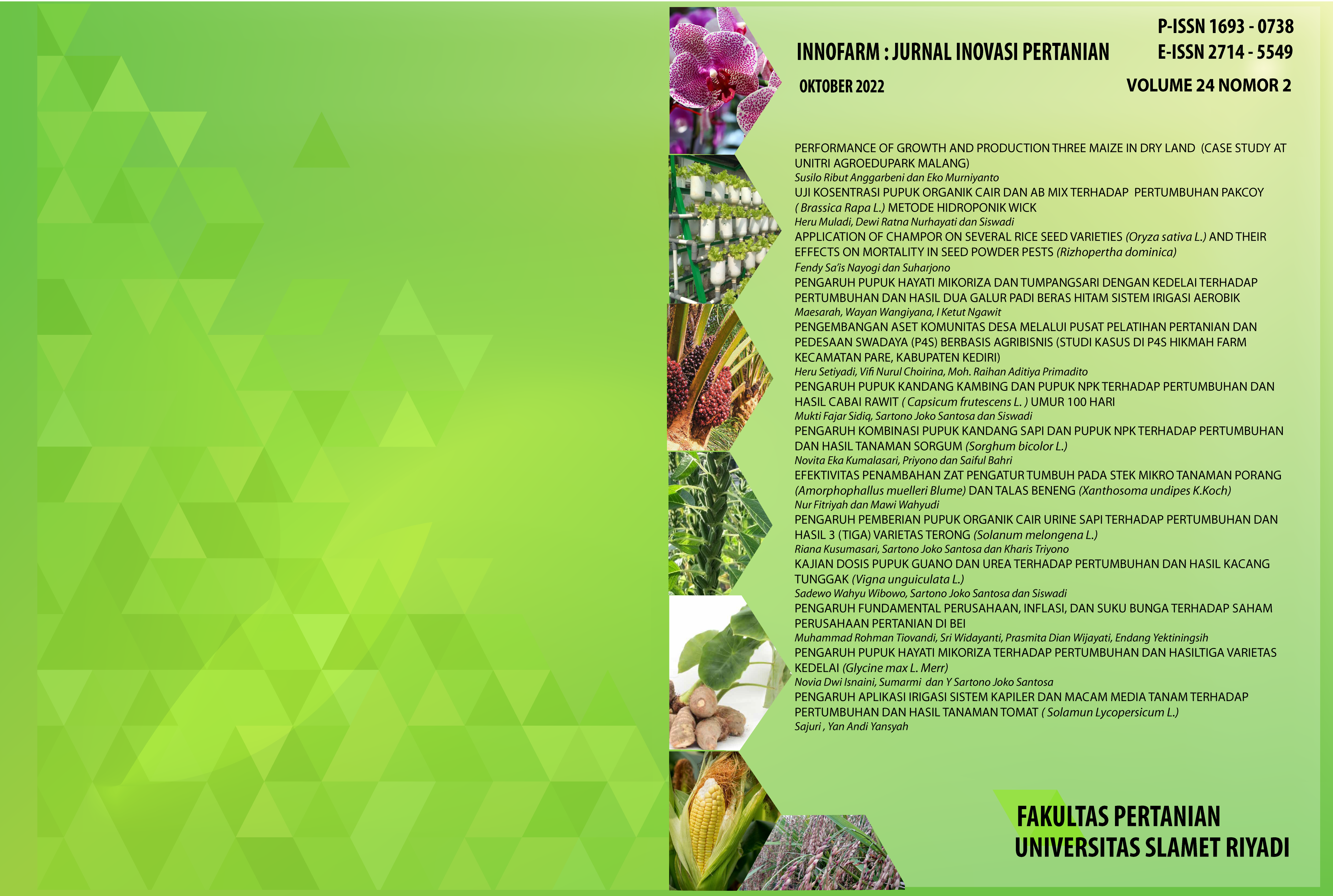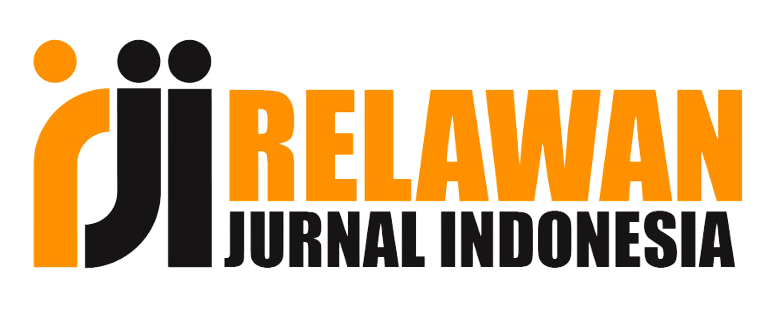PENGARUH APLIKASI IRIGASI SISTEM KAPILER DAN MACAM MEDIA TANAM TERHADAP PERTUMBUHAN DAN HASIL TANAMAN TOMAT (SOLANUM LYCOPERSICUM L.)
Keywords: capillary irrigation system, growing media, tomato.
DOI:
https://doi.org/10.33061/innofarm.v24i2.8138Abstract
This study aims to determine the effect of capillary system irrigation applications and various growing media on tomato plants and their interactions. The research was conducted in Klidang Wetan Village, Batang District, Batang Regency, Central Java at an altitude of 2 m above sea level. The experimental design used was a split plot with the main plot of the irrigation system, the sub plot was the type of planting media, with 3 replications. The first factor is the type of capillary irrigation system /W (W1 = automatic capillary system irrigation, W2 = manual capillary system irrigation) and the second factor is the type of planting medium /M (M0 = soil, M1 = soil + sand + husk charcoal /1:1: 1/, M2 = soil + husk charcoal + manure /1:1:1, M3 = soil + sand + husk + manure /1:1:1). Data were analyzed by F test, if significantly different, then followed by BNT (Least Significant Difference) 5%. The variables observed were plant height, number of leaves per plant, widest leaf area, stem diameter, longest root length, flowering time, number of fruit per plant, fruit weight per fruit. fruit weight per plant, root weight. The results showed that capillary irrigation had a significant effect on the longest root length and flowering time, significantly different on the number of leaves per plant, stem diameter, number of fruits per plant, and fruit weight per plant. The best results are achieved in the application of manual capillary irrigation systems. The type of planting media significantly influenced the observed variables on plant height, number of leaves per plant, widest leaf area, stem diameter, longest root length, flowering time, number of fruits per plant, fruit weight per plant, observational variables but on the variable fruit weight per fruit. and root weight had no significant effect. The best results were achieved in the treatment of soil + husk charcoal + manure planting media (1:1:1). The interaction between capillary system irrigation and types of planting media was significantly different on the variables of stem diameter, plant height, flowering time, and not significantly different on the variables of number of leaves per plant, widest leaf area, longest root length, number of fruit per plant, fruit weight per fruit. , fruit weight per plant, and root weight. The best results were achieved in the application of manual capillary irrigation system with various planting media of soil + husk charcoal + manure (1:1:1).
Downloads
Published
Issue
Section
License
Copyright (c) 2022 sajuri sajuri, Yan Andi Yansyah

This work is licensed under a Creative Commons Attribution-NonCommercial 4.0 International License.
Authors who publish this journal agree to the following terms:
- Authors retain copyright and grant the journal right of first publication with the work simultaneously licensed under a Creative Commons Attribution License that allows others to share the work with an acknowledgement of the work's authorship and initial publication in this journal.
- Authors can separately make additional contractual arrangements for non-exclusive distribution published by the journal (e.g., publish it in a book), with an acknowledgement of its initial publication in this journal.
- Authors are allowed and encouraged to send their work via online (e.g., in the institutional repositories or their website) after published by the journal.


















